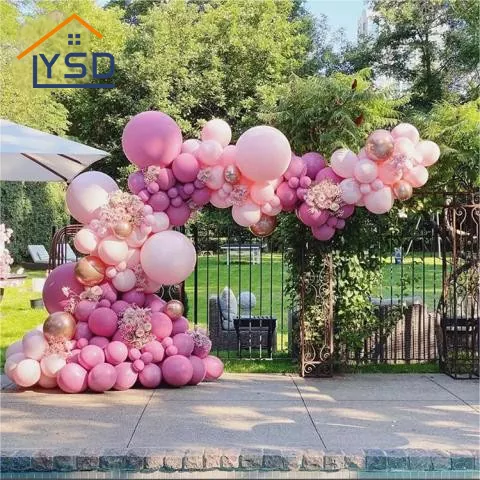What Materials Are Used in the Manufacturing of Latex Balloons?
2025-01-21
Latex balloons have long been a popular choice for festivities and decorations, thanks to their brilliant colors, flexibility, and versatility. But have you ever wondered what goes into creating these legendary party essentials? This blog explores at the ingredients used to make latex balloons and their distinctive qualities, which make them suitable for a range of purposes.
Natural Latex: The Primary Material.
Natural latex, a milky fluid derived from the sap of rubber trees (Hevea brasiliensis), is an essential component in the creation of latex balloons. This environmentally friendly material is not only renewable but also biodegradable, making latex balloons a more sustainable option than their plastic cousins.
- Harvesting Latex: The process begins by tapping rubber trees to harvest latex sap, which is subsequently filtered and refined to remove contaminants.
- Composition: Natural latex is mostly composed of rubber particles suspended in water, with trace amounts of proteins, lipids, and resins.

Additives for Improving Performance
While natural latex serves as the substrate, many chemicals are incorporated throughout the manufacturing process to improve the qualities of the balloons:
1. Pigments:
- Vibrant colors are achieved by adding pigments to the latex mixture. These pigments are non-toxic and designed to maintain their brightness even when the balloons are inflated.
2. Accelerators:
- Compounds like sulfur or other vulcanizing agents are added to strengthen the latex through a process called vulcanization. This improves elasticity and durability.
3. Stabilizers:
- Stabilizers help maintain the latex’s integrity, preventing premature degradation from exposure to light, heat, or air.
4. Plasticizers:
- Plasticizers increase the flexibility of the latex, allowing the balloons to stretch without tearing.
5. Anti-tack Agents:
- To prevent the balloons from sticking together, a fine powder (like cornstarch) is often applied to their surface after manufacturing.
The Manufacturing Process
To produce the finished product, the components are blended and processed in a series of steps:
1. Compounding: - Latex is blended with pigments and additives to create a homogeneous compound.
2. Dipping: Balloon molds are dipped into a latex mixture to create a thin layer around them.
3. Drying and Vulcanizing: The coated molds are heated to vulcanize the latex, increasing its strength and elasticity.
4. Demolding and Finishing: - Balloons are removed from molds, washed, and dusted with anti-tack chemicals before packing.
Sustainability of Latex Balloons
Natural latex is a biodegradable material that degrades after a few months in the correct atmosphere. This makes latex balloons a more sustainable option than balloons made of synthetic materials such as Mylar. However, proper disposal and careful use are critical to reducing their environmental impact.
Conclusion
Latex balloons are crafted from a combination of natural latex and carefully selected additives that ensure their elasticity, durability, and vibrant appearance. By understanding the materials and processes involved in their production, we can appreciate the craftsmanship behind these seemingly simple yet joyful products. As a sustainable choice for celebrations, latex balloons bring both color and conscience to any event.
The professional China Latex Balloon manufacturer and supplier, we have own factory. We will give you the satisfactory quotation. Let us cooperate with each other to create a better future and mutual benefit.Visit our website at www.fashionao.com to learn more about our products. For inquiries, you can reach us at sale@fashionao.com.

